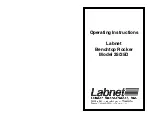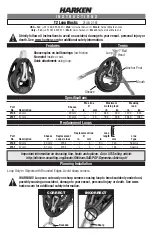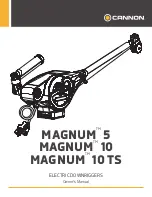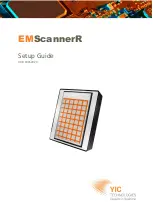
Standard Economizers
Part No. 750-266
1-
9
combustion source is off and is cool, and the economizer is cool before attempting to inspect or clean
the fin coil(s).
On natural gas fired applications, with clean exhaust conditions, physical inspection will be minimal
if proper combustion at the heat source is maintained.
Oil fired applications may require more frequent inspection of the heat transfer core area because of
the greater potential for soot loading and particulate buildup on the finned tube surface.
C-B's exclusive Timed Automatic Sootblower assemblies are often recommended on oil fired or
incineration applications where fouling is inevitable on a more regular basis. Keeping the heating
surface clean at all times assures the maximum heat transfer. Soot buildup on the finned tubing from
poor combustion acts as an insulator and will dramatically reduce the exchanger’s efficiency. When
the combustion source is a fuel oil grade, a good periodic maintenance schedule for inspecting the
exchanger and keeping the combustion source tuned up will ensure many years of trouble free fuel
savings from exhaust heat recovery.
Stainless steel inspection door panels shroud the coil(s) of all CCE Series exchangers. The door closure
of each hinged panel has a set of quick-release tension latches (requiring no tools) that enable
immediate and complete access to the heat exchanger area. Some units have bolted doors when static
pressure exceeds 10.0" water column and will require a wrench to open.
The inspection and maintenance procedure can be performed without dismantling any of the piping
or the stack connections. If the Btu/hr. recovery begins to show a consistent performance drop off from
the original operating condition, the sootblower (if equipped as an option) should be initiated. If the
economizer is not equipped with a timed automatic sootblower, the access door should be opened for
inspection and cleaning. A large access door (optional hinged assembly available) for tube inspection,
cleaning, or tube removal is provided for use as required (CRE only).
If it has been determined the fins are dirty and need cleaning (i.e. 1/16" thickness build up on the
fins), the fouled finned tube area can be manually cleaned by blowing high pressure steam or air with
a lance assembly across the fins. When manually cleaning with air or steam, first open the internal
damper to the ‘bypass position’ (the damper arm should be placed in line or parallel to the exhaust
gas stream).
The following is the procedure for opening and closing large doors on CRE units.
NOTE:
it may be
necessary to provide a means of supporting the weight of the door.
1. Remove all nuts from the door flange studs, except one located opposite the hinges.
2. Loosen all hinge nuts.
3. Pull hinge side of door all the way out to where the hinge slots stop at the studs and retighten hinge
nuts.8.
4. Remove the last nut opposite the hinge side.
5. *Pull door out until adjusting bolt hits stop. The door should be out past the bolts.
6. *Lower adjusting bolt until door hangs freely and adjusting bolt clearsstop.
7. Door is ready to open.
8. Reverse steps to close.
*The adjusting bolt feature is not incorporated on the smaller hinged doors.
Once exposed, the fouled finned tube core area can be manually cleaned by blowing high pressure
steam or air through a lance assembly across the fins. If high pressure air or steam is not available,
an industrial vacuum cleaner may be substituted. Coil Bright (a commercial cleaner can also be used
in conjunction with a steam or hot water cleaning device) also offers an excellent cleaning capability
if high pressure air is not available.
NOTE:
Often there is sufficient draft at the stack above the exchanger which can blow the soot off the
fins and carry it out the stack.
Summary of Contents for C1X Series
Page 1: ...Economizers 750 266 1 15 CRE CCE C2X C1X Operation Manual...
Page 2: ......
Page 6: ...vi NOTES...
Page 20: ...Standard Economizers 1 14 Part No 750 266 Figure 1 7 Piping with circulating tank BOILER...
Page 29: ...Condensing Economizers Part No 750 266 2 9 Figure 2 7 Dimension diagram C2X BB...
Page 33: ...Condensing Economizers Part No 750 266 2 13 Figure 2 9 Single boiler with deaerator...
Page 39: ...Condensing Economizers Part No 750 266 2 19 Figure 2 11 Two boilers with deaerator...
Page 51: ...Condensing Economizers Part No 750 266 2 31...
Page 52: ...e mail info cleaverbrooks com Web Address http www cleaverbrooks com...
















































